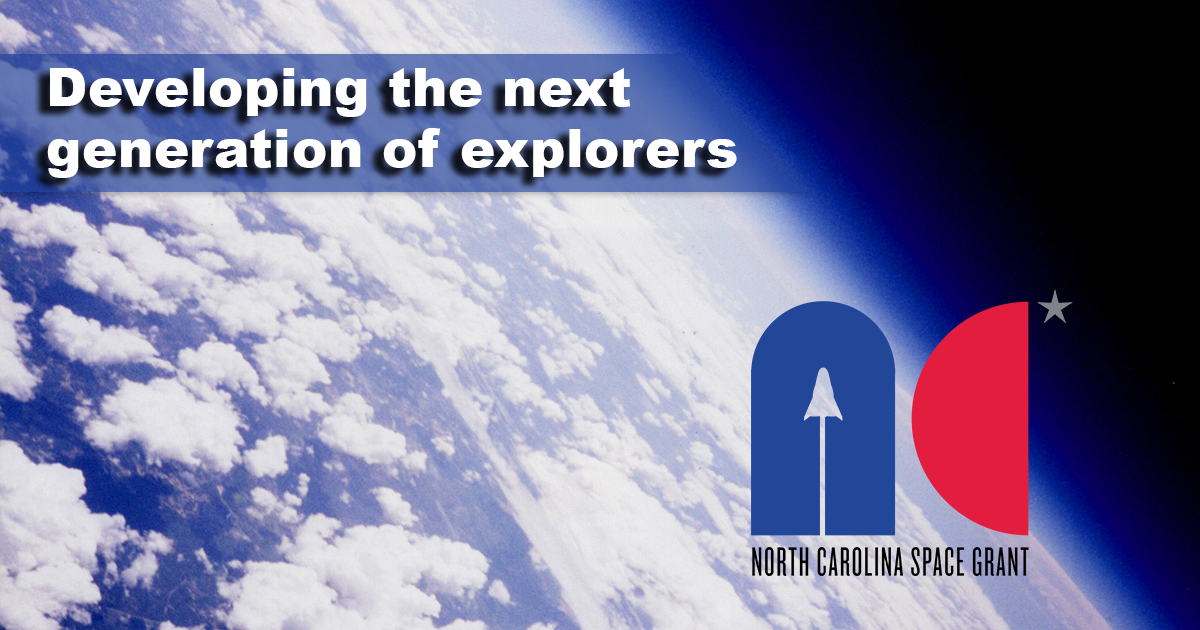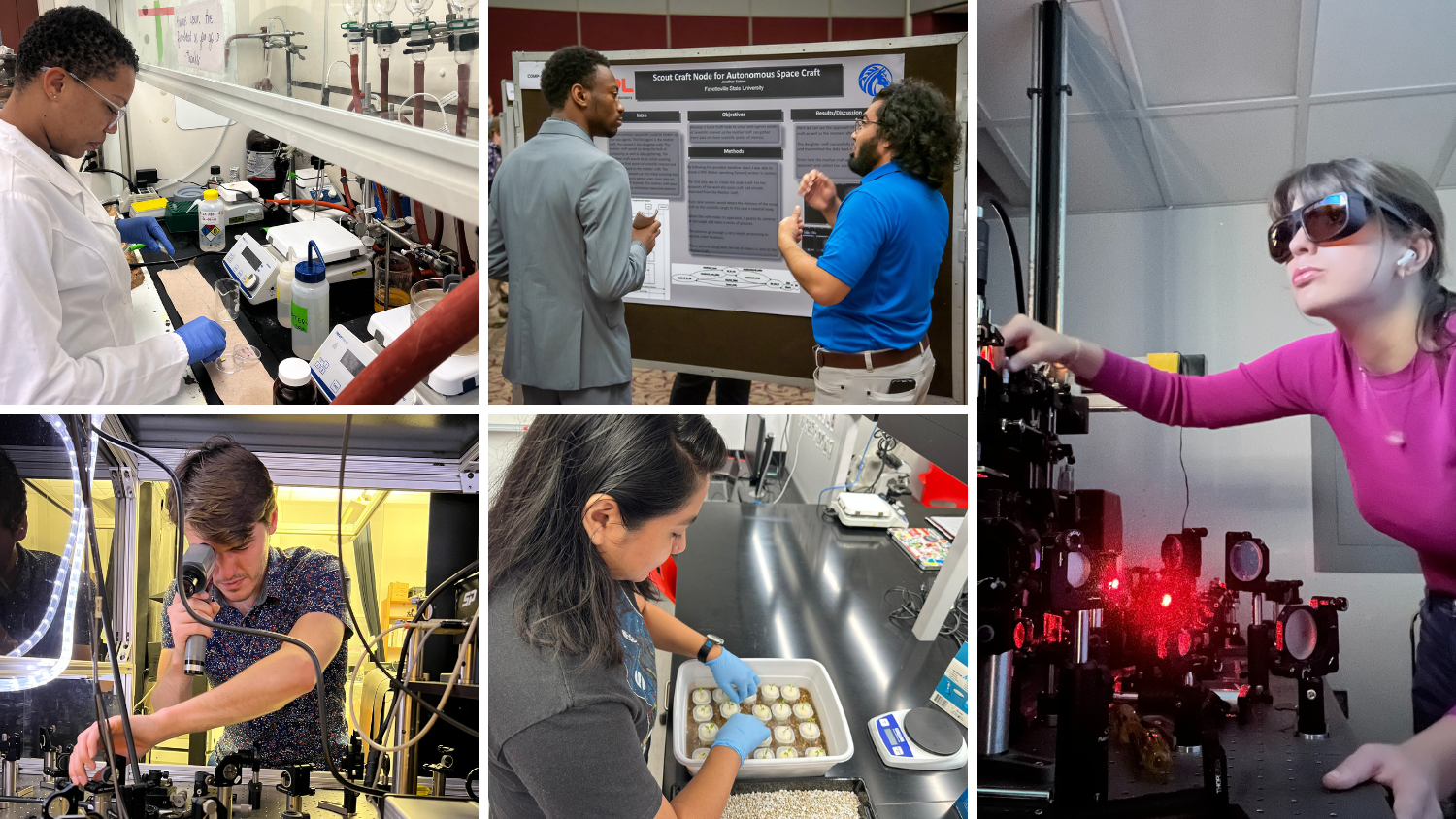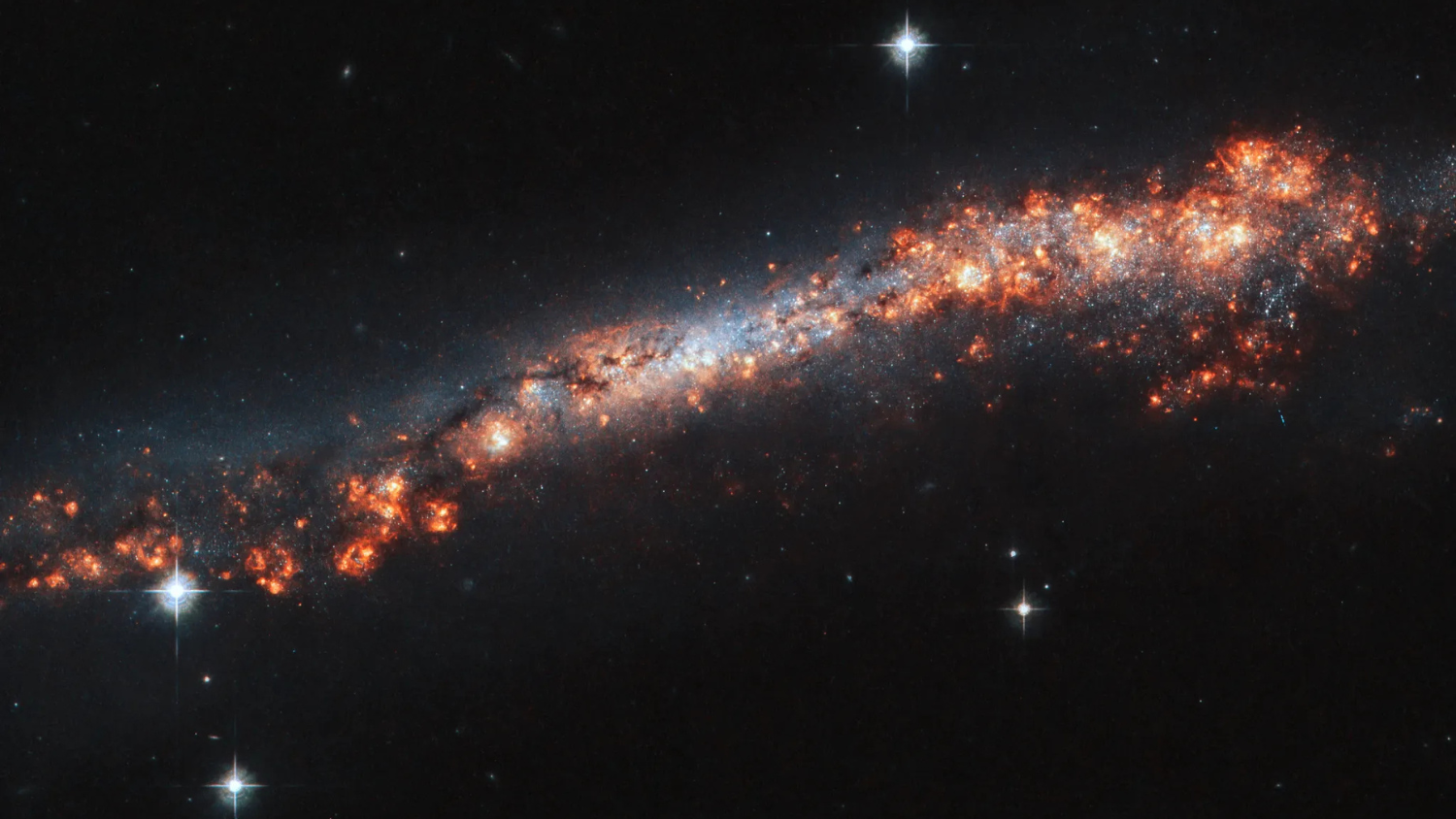NC Space Grant 2022-23 Faculty Research Grant Recipients Announced

By Pat Ben-Israel
NC Space Grant is pleased to announce the recipients of the 2022 Faculty Research Grants. The selected faculty members will make research contributions to the aerospace field through examination of topics in mechanical, materials, biomedical and aerospace engineering. NC Space Grant will support each faculty member’s research for a two-year period, enabling thorough exploration of research interests.
NC Space Grant created the Faculty Research Grant to encourage faculty pursuing research aligning with NASA’s Mission Directorates. Faculty also actively engage undergraduate and graduate researchers in their projects, allowing for meaningful student involvement.
This grant for faculty researchers aims to support established and emerging researchers who want to develop new projects and collaborations with partners spanning different academic institutions, NASA centers, state and federal research facilities, aerospace and aviation industries, education partners and state and local government agencies.
NC Space Grant proudly acknowledges the 2022 Faculty Research Grant awardees:

Shih-Chun Lin, Ph.D.
North Carolina State University
6G Serverless Computing Architecture with Service-Level Agreement Assurance for Cross-Constellation Communications Command and Control
Nowadays, several satellite constellations from different operators, such as governments (e.g., SMC, SDA) or commercial companies (e.g., SpaceX, Amazon), are functioning in space for various purposes. The architecture of those constellations from both hardware and software perspectives may show considerable disparity since the satellites’ goals and adopted technologies may vary widely. Hence, given two heterogeneous constellation systems, building connectivity between them is almost impossible due to the different monolithic system implementations and communications protocols. The overall objective of this project is to address the technical issues in the Space-Based Adaptive Communications Node (SBACN) by providing reliable connections between satellites in different constellations managed by diverse operators using optical inter-constellation links. SBACN will offer a coordination protocol and APIs to serve satellites in different constellations using a hierarchical architecture to enable cross-constellation connectivity. An SBACN Communications Command and Control (C2) center will connect to several SBACN terminals, integrated into current satellite operators’ constellations to act as the gateways of different constellations. This SBACN C2 center will then be responsible for coordinating and realizing the inter-constellation-level connectivity. The operators can still develop their intra-constellation-level operations. These project outcomes will significantly impact the advance in multiple research fields of 6G serverless computing, route-planning optimization, and resilient cyber-harden connectivity for mega-constellations (e.g., Starlink, Project Kuiper) C2. The project results will substantially benefit society in safety, efficiency, and sustainability and profoundly help the human community, especially in remote or landlocked areas with limited infrastructure investments, by providing resilient access equality to high-throughput satellite communications.

JP Sherman, Ph.D.
Appalachian State University
Initial Closure Studies of Atmospheric Aerosol Hygroscopicity and Cloud Condensation Nuclei at the Appalachian Atmospheric Interdisciplinary Research Facilities (AppalAIR)
Atmospheric aerosols are suspended liquid or solid particles and are observed as haze, smoke, or dust. High levels of summertime aerosols in the heavily-forested SE U.S. are believed to have contributed to a lack of 20th century regional warming. Aerosol water uptake and the role of some aerosols as cloud condensation nuclei (CCN) are critical for modeling aerosol-cloud interactions and aerosol direct radiative forcing, which represent the two large uncertainties on climate forcing. Some particles can be activated as CCN under super-saturated conditions, dependent on the particle size, composition, and the degree to which air surrounding the particle is supersaturated. The proposed project represents the first phase in applying the world-class NASA and NOAA-supported aerosol datasets at Appalachian State University’s AppalAIR facilities to study aerosol hygroscopic growth and aerosol-cloud interactions. The overarching goal is to assess the suitability of Mie Theory and modified κ-Kohler Theory for predicting aerosol hygroscopic growth and CCN number concentrations. We will use measurements of dry particle size distributions, aerosol scattering hygroscopic enhancement f(RH), and (in summer 2023) CCN number concentrations in closure studies. Two APP students will gain a wholistic experience in cutting-edge climate science research, ranging from data acquisition to instrument maintenance/calibrations to modeling and developing software for data analysis to developing presentations based on project results. New research collaborations with researchers at Georgia Tech and New Mexico Tech will result from the project, whose results will be leveraged in a major NSF proposal to conduct more detailed studies of aerosol-cloud interactions.

Dan Reichart, Ph.D.
University of North Carolina at Chapel Hill
Automated Search and Follow-Up of Electromagnetic Counterparts to Gravitational-Wave Events in O4
The proposed observing effort will capitalize on our facilities’ apt design and broad geographic distribution, and proven success, to as quickly as possible identify optical counterparts to gravitational-wave (GW) events. Earlier observations are critical to understanding binary neutron star, and neutron star-black hole, merger events. r-process nucleosynthesis in the tidal ejecta, in the equatorial plane, is expected to be lanthanide-rich, which will increase the opacity of the ejecta, resulting in a red, approximately week-long counterpart (i.e., the kilonova), as was observed in GW 170817. However, even in this, our only case to date, the first observations of the counterpart, ≈11 hours post-event, were blue. This could be due to a higher electron fraction (resulting in suppressed lanthanide production) in polar ejecta, or in neutrino-driven winds, or due to non-thermal afterglow emission from either an accretion-disk driven jet, or a jet-driven cocoon, that breaks through the ejecta: Earlier observations would have been required to distinguish between these (and probably other, unanticipated) scenarios. Measurements of the polar component relative to the tidal component, or of the non-thermal afterglow, could yield viewing-angle information, which in combination with the GW measurement could result in a “clean” measurement of the distance, and hence in a new, local method of measuring Hubble’s constant. Counterpart information will be reported to the broader astronomical community immediately, and possibly within only minutes of GW triggers if prompt emission is sufficiently bright.

Nicholas Meskhidze, Ph.D.
North Carolina State University
Particle Turbulent Flux Retrievals Through Novel Remotely Sensing Methodology
The variability in the ambient concentration of PM 2.5 (particulate matter with an aerodynamic diameter of 2.5 micrometers or smaller) is a topic of interest in both air quality and climate sciences. Epidemiological studies have shown that prolonged exposure to high concentrations of PM 2.5 may cause cardiovascular and respiratory health complications. Such particles can also influence the Earth’s energy balance directly by modulating the incoming radiation or indirectly by affecting clouds. Several in-situ monitoring networks across the U.S. and other countries routinely measure PM 2.5. However, the time-averaged concentration measurements give no indication of the possible sources of the particles (i.e., local vs long-range transported and injected through the planetary boundary layer) which could be extremely important for the design of effective control strategies and improved air quality management. This work explores the application of NASA remote sensing instruments for inferring aerosol vertical turbulent mass fluxes and chemical composition. Aerosol mass fluxes inferred from remote sensing will be compared to the results calculated using the eddy covariance technique and in-situ data collected as part of the National Science Foundation (NSF)-funded work at the Department of Energy (DOE) Southern Great Plains atmospheric observatory in Lamont, Oklahoma. The work also envisions collaborations with the NASA Langley research team to explore the application of model-satellite data fusion for the representation of the global profiles of aerosol turbulent mass fluxes. The algorithms developed in this work will specifically be designed for the future spaceborne architecture of the NASA Atmosphere Observing System (AOS).
☽
- Categories:


